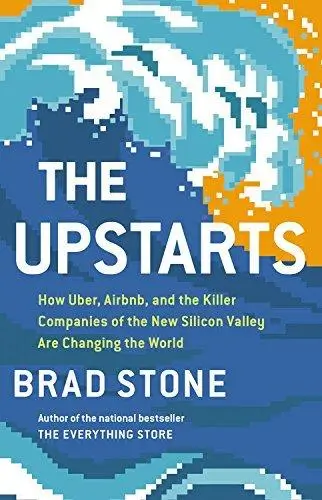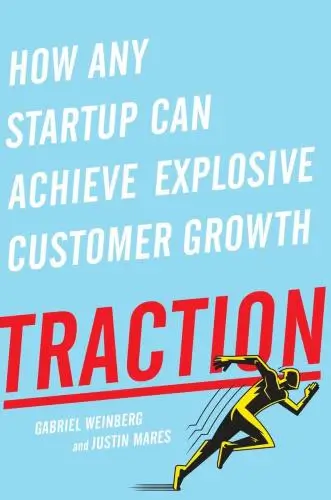The 22 Immutable Laws of Marketing
Violate Them at Your Own Risk!
What's it about?
The 22 Immutable Laws of Marketing by Al Ries is your essential guide to mastering the art of marketing. Unveiling 22 powerful strategies, this book distills complex concepts into clear, actionable laws. From the Law of Leadership to the Law of the Category, it's packed with insights on how to make a brand unforgettable and dominate the market. Whether you're a budding entrepreneur or a seasoned marketer, this book is a must-read to navigate the competitive business landscape with confidence and creativity.
About the Author
Al Ries is a marketing strategist and author, best known for co-authoring "Positioning: The Battle for Your Mind," a groundbreaking work introducing the concept of brand positioning. His writing, characterized by clear, insightful analysis, focuses on marketing strategy and the importance of positioning in competitive markets.
10 Key Ideas of The 22 Immutable Laws of Marketing
The Law of Leadership: Why Being First in the Market Creates a Lasting Brand
Being the first brand to enter a market allows you to define the product category and position yourself as the leader.
This leadership position is powerful because consumers tend to remember the first brand that introduced them to a new concept or product, making it more likely for them to become loyal customers.
The reasoning behind this law is rooted in human psychology; our brains are wired to attach significance to first experiences, making subsequent brands in the same category fight an uphill battle to claim market share.
Learn DeeperIdentify emerging trends or needs: Stay informed about your industry and broader societal trends. Look for gaps in the market or emerging needs that no product currently meets. Being the first to spot these can position you as a market leader.
Develop a unique value proposition: Once you've identified a potential new market, define what makes your product or service unique. How does it address the need differently or better than anything else might? This uniqueness will help cement your leadership position.
Focus on brand awareness from the start: Use marketing strategies that highlight your status as the first in the market. Storytelling can be a powerful tool here, emphasizing the novelty and innovation of your offering.
Build a community around your brand: Engage early adopters and turn them into brand ambassadors. Their testimonials and word-of-mouth can be invaluable in reinforcing your position as the market leader.
Continuously innovate: Being first isn't just about launching; it's about staying ahead. Continuously improve your product and adapt to changing market needs to maintain your leadership status.
- Example
Apple's introduction of the iPhone is a classic example of the Law of Leadership. They weren't the first company to create a smartphone, but they were the first to make it highly desirable and user-friendly, effectively defining the modern smartphone market.
- Example
Google wasn't the first search engine, but it quickly became the leader by offering a more accurate and user-friendly search experience. Its name has even become synonymous with searching the internet, demonstrating the power of being perceived as the market leader.
The Law of the Category: Creating Your Own Niche for Success
If you can't be the first in a general category, the next best strategy is to create a new category you can be first in.
This involves identifying a specific need that isn't being met by existing products or services and tailoring your offering to meet that need.
By doing so, you effectively create a new market space where you are the leader, allowing you to set the standards and expectations within that niche.
This approach not only reduces direct competition but also allows for more targeted marketing efforts.
Learn DeeperIdentify a Gap in the Market: Start by researching your industry and identifying needs that are not currently being met. Look for complaints, wish lists, or suggestions in forums, reviews, and social media related to your field.
Define Your Niche Clearly: Once you've identified a potential gap, define your niche by specifying what makes your offering unique. Consider factors like target demographics, specific problems solved, and how your product or service improves upon existing options.
Develop a Tailored Solution: Create a product or service that specifically addresses the needs of your identified niche. Focus on quality and how it solves the problem better or differently than anything else available.
Educate Your Market: Use content marketing, social media, and other channels to educate your target audience about the problem you solve and why your solution is the best option. Highlight the benefits and unique features of your offering.
Gather Feedback and Iterate: After launching your product or service, gather feedback from your initial users. Use this feedback to make improvements and further tailor your offering to better meet the needs of your niche.
- Example
A company notices that while there are many coffee shops, none offer a quiet, distraction-free environment for writers. They open a coffee shop catering specifically to writers, with individual writing booths, noise-canceling headphones for rent, and literary-themed events.
- Example
An entrepreneur realizes that most skincare products are targeted towards women and decides to create a skincare line specifically for men with sensitive skin. The products are formulated with gentle ingredients and packaged in a masculine design, filling a gap in the market.
The Law of the Mind: Winning the Battle in Consumers' Minds
It's not enough to simply be first in the market; you must also be first in the mind of the consumer.
This means your marketing efforts should focus on creating strong, memorable associations between your brand and the product category.
Achieving this requires understanding your target audience deeply and crafting messages that resonate with their desires, needs, and emotions.
Being top-of-mind increases the likelihood of purchase decisions favoring your brand over competitors.
Learn DeeperIdentify Your Unique Selling Proposition (USP): Clearly define what makes your product or service unique. This could be its quality, price, design, or any feature that sets it apart from competitors. Use this USP as the cornerstone of your marketing messages.
Understand Your Target Audience Deeply: Conduct market research to gather insights about your target audience's preferences, pain points, and behaviors. Use surveys, focus groups, or social media analytics to collect data. Tailor your marketing messages to address their specific needs and desires.
Create Memorable Branding Elements: Develop a catchy slogan, a distinctive logo, or a memorable brand mascot. These elements should be consistently used across all marketing channels to reinforce brand recognition.
Leverage Storytelling: Craft compelling stories around your brand or products that resonate with your audience's emotions. Stories are more likely to be remembered and can significantly enhance brand recall.
Utilize Social Proof: Share customer testimonials, reviews, and case studies in your marketing materials. Seeing others vouch for your brand can strongly influence potential customers' perceptions and decisions.
- Example
A coffee shop that positions itself as the only local cafe offering organic, fair-trade beans might use its commitment to sustainability as its USP. It could then create marketing campaigns highlighting the positive impact of choosing fair-trade products, appealing to environmentally conscious consumers.
- Example
A tech company launching a new fitness tracker could focus on its unique feature of monitoring stress levels in addition to the usual metrics like steps and heart rate. The company could share stories of how this feature has helped real users manage their stress better, using these narratives in online ads and social media posts.
The Law of Focus: Owning a Word in the Consumer's Mind
Achieving a lasting impact in marketing often comes down to focusing on a single word or concept that represents your brand in the minds of consumers.
This word should encapsulate the essence of your brand's promise and differentiate it from competitors.
By consistently associating your brand with this word in all marketing communications, you can achieve a strong, focused brand identity that cuts through the noise and resonates with consumers.
Learn DeeperIdentify Your Unique Selling Proposition (USP): Start by understanding what makes your brand or product unique. What can you offer that no one else can? This will help you find the word that best represents your brand.
Research Your Audience: Understand the language, desires, and needs of your target audience. The word you choose to represent your brand should resonate with them on a personal level.
Consistency is Key: Once you've chosen your word, integrate it into all aspects of your marketing - from your website and social media to advertising and packaging. Consistency helps reinforce your brand's identity.
Monitor and Adapt: Keep an eye on how your chosen word is being received by your audience. Be prepared to make adjustments based on feedback and changing market dynamics to ensure the word continues to effectively represent your brand.
- Example
Volvo has successfully owned the word 'safety' in the automotive industry. By consistently focusing on safety innovations and integrating this message into all their marketing efforts, Volvo has become synonymous with vehicle safety.
- Example
Google has claimed the word 'search' in the digital world. Through its focus on providing the best search engine experience, Google has made its name almost interchangeable with the act of searching online.
The Law of Exclusivity: Two Companies Cannot Own the Same Word in the Consumer's Mind
When one brand successfully positions itself with a particular word or concept, it becomes extremely difficult for another brand to claim the same space in the consumer's mind.
This exclusivity is crucial because it forces competitors to find alternative ways to differentiate themselves.
Attempting to usurp a competitor's position by claiming the same word or concept usually results in confusion and dilutes both brands' identities, making it a counterproductive strategy.
Learn DeeperIdentify Your Unique Selling Proposition (USP): Reflect on what makes your product or service unique. This could be an innovative feature, exceptional service, or a specific benefit that only you offer. Once identified, make this the cornerstone of all your marketing efforts.
Craft a Memorable Tagline: Develop a concise and catchy tagline that encapsulates your USP. This tagline should be easy to remember and clearly communicate the value you provide, helping to solidify your brand's position in the consumer's mind.
Consistently Communicate Your Brand Message: Use every opportunity, from advertising to social media, to reinforce your unique position. Consistency is key. The more consistently you communicate your message, the more likely it is to stick in the consumer's mind.
Monitor Your Competitors: Keep an eye on how your competitors position themselves. Understanding their strategies can help you further differentiate your brand and avoid overlapping with their messaging.
- Example
In the fast-food industry, Subway successfully positioned itself around the concept of 'healthy fast food' by focusing on fresh ingredients and customizable sandwiches. This unique positioning distinguishes it from competitors who emphasize speed or taste.
- Example
In the automotive sector, Volvo has long owned the word 'safety' in consumers' minds. Their consistent focus on safety innovations and marketing campaigns highlighting this aspect has made it difficult for competitors to encroach on this territory without seeming like imitators.
Deeper knowledge. Personal growth. Unlocked.
Unlock this book's key ideas and 15M+ more. Learn with quick, impactful summaries.
Read Full SummarySign up and read for free!
The 22 Immutable Laws of Marketing Summary: Common Questions
"The Law of Leadership: It's better to be first than it is to be better."
I just finished reading "The 22 Immutable Laws of Marketing" by Al Ries. The book delves into essential principles in marketing that every business should follow to succeed. What really had me hooked were the real-life examples that highlighted how these laws have played out in the success or failure of various companies. It made me see marketing strategies in a whole new light, emphasizing the importance of positioning and perception.
While some laws seemed like common sense, others left me questioning my own assumptions about marketing. The book is concise, straightforward, and packed with valuable insights that are applicable to businesses of all sizes. If you're a marketing enthusiast or looking to understand the basics of marketing strategy, this book is a must-read.
Experience Personalized Book Summaries, Today!
Discover a new way to gain knowledge, and save time.
Sign up for our 7-day trial now.
No Credit Card Needed

Similar Books

$100M Offers
Alex Hormozi
Principles of Marketing, Global Edition
Gary Armstrong
The 100 Best Business Books of All Time
Jack Covert
Playing to Win
A.G. Lafley
Productize
Eisha Armstrong
Start Your Own Pet-Sitting Business and More
Entrepreneur Press
The Upstarts
Brad Stone
Lean Analytics
Alistair Croll
Built to Sell
John Warrillow
Traction
Gabriel WeinbergTrending Summaries

Peak
Anders Ericsson
Never Split the Difference
Chris Voss
Smart Brevity
Jim VandeHei
The Psychology of Money
Morgan Housel
The First 90 Days
Michael D. Watkins
Atomic Habits
James Clear
Thinking, Fast and Slow
Daniel Kahneman
The Body Keeps the Score
Bessel van der Kolk M.D.
The Power of Regret
Daniel H. Pink
The Compound Effect
Darren HardyNew Books

The Art of Spending Money
Morgan Housel
$100M Offers
Alex Hormozi
A Candle for Kiri
Edna Mae Holm
Principles of Marketing, Global Edition
Gary Armstrong
Serpent Rising: The Kundalini Compendium
Neven Paar
Feeling Is the Secret
Neville Goddard
The 100 Best Business Books of All Time
Jack Covert
My Oxford Year
Julia Whelan
Trading in the Zone
Mark Douglas

